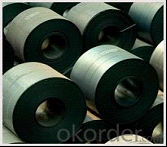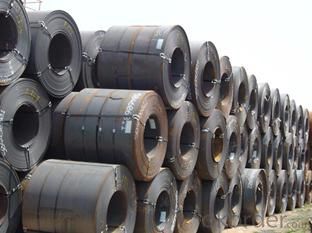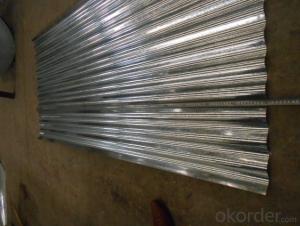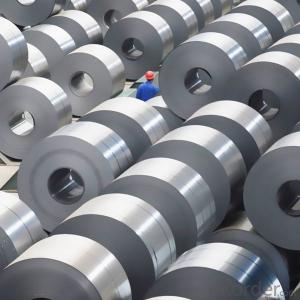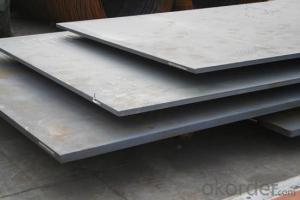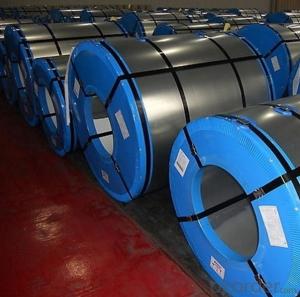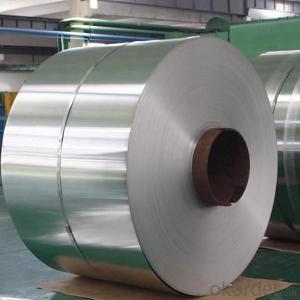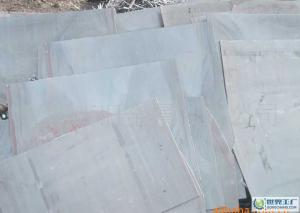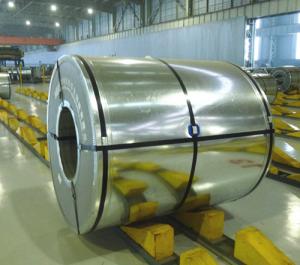Hot Rolled Steel Coils/Sheets from China, A36
- Loading Port:
- China main port
- Payment Terms:
- TT OR LC
- Min Order Qty:
- 2 m.t.
- Supply Capability:
- 1000000 m.t./month
OKorder Service Pledge
OKorder Financial Service
You Might Also Like
Specificationshot rolled steel plate
Grade:S235jr S275jr S355jr SS400 A36
Size:1.8 -100x1000 -3000x2000mm
BV approved
Quality Assuranc
A36 Hot Rolled Steel Plates
Carbon Steel Plate
Grade: S235jr S275jr S355jr SS400 Q235 Q345 ASTM A36
Thickness:1.8-100mm
Width:1000-2500mm
Length: 2000-12000mm as request
Mill: qualified steel mill in China
Bundle weight: max 4mt or as request
Package: seaworthy packing ( bared with steel strips )
Payment: L/C,T/T
Shipment: within two months, immediate shipment for stock
Product: | Hot Rolled Steel Coils/Sheets |
Material: | Q195,Q235,A36,SS400,S235JR,Q345,ST37-2, CCSB etc |
Standard : | JIS G3002 GB/T251B |
Technique: | hot rolled |
Thickness | 1.2mm to 200mm |
Tolerance of thickness: | :+/-0.03mm |
Width: | 750mm-2000mm |
Tolerance of width: | :+/-5.00mm (aiming to +/-2.00mm) |
Normal width: | 914mm, 1000mm, 1200mm, 1219mm, 1250mm,1500mm |
Length: | According to requirement |
Coil ID: | 508mm-610mm |
Coil Weight: | 10-25 Metric Tons |
Surface: | Black, Chromate, fingerprint resistant treatment, slight oiled or non-oiled, dry |
Port of Loading: | Tianjin/Shanghai port |
Packaging Details: | Standard export packing or according to the clients required |
Delivery Time | Within 30 days after received 30% deposit or workable L/C |
Payment Terms: | L/C,T/T |
- Q: How do steel sheets perform in thermal conductivity?
- Steel sheets have a high thermal conductivity, which means they are efficient in transferring heat.
- Q: Can steel sheets be used for manufacturing electrical enclosures?
- Indeed, it is possible to utilize steel sheets in the production of electrical enclosures. The durability, strength, and capability of steel to provide essential safeguarding for electrical components have rendered it a widely employed material for constructing such enclosures. By employing steel sheets, one can ensure that the enclosure possesses robustness and can endure diverse environmental conditions. Furthermore, steel possesses commendable electromagnetic shielding properties, which aid in safeguarding delicate electronic equipment against interference. Additionally, steel sheets are resistant to fire, rendering them appropriate for manufacturing enclosures that must adhere to safety regulations. In summary, steel sheets are a dependable option for fabricating electrical enclosures due to their attributes and appropriateness for the intended purpose.
- Q: Can steel sheets be used for manufacturing cutlery?
- Yes, steel sheets can be used for manufacturing cutlery. Steel is a common material used in the production of knives and other cutlery due to its strength, durability, and corrosion resistance. Steel sheets can be shaped, cut, and forged into various cutlery designs, ensuring the final product is sturdy and capable of cutting efficiently.
- Q: Can steel sheets be laminated with other materials?
- Indeed, it is possible to laminate steel sheets with different substances. Lamination involves the fusion of two or more materials to form a composite material that boasts improved characteristics. When it comes to steel sheets, they can be laminated with a variety of materials including plastics, polymers, wood, and even other metals. This technique is frequently employed to enhance the strength, longevity, resistance to corrosion, and visual appeal of steel sheets. Laminated steel sheets can be observed in numerous sectors such as automotive, construction, aerospace, and furniture production.
- Q: How do steel sheets perform in abrasive environments?
- Due to their exceptional strength and durability, steel sheets excel in harsh environments that are known for causing abrasion. The resilience of steel, owing to its hardness, enables it to withstand the abrasive effects of materials like sand, gravel, and dust particles. Furthermore, the sleek surface of steel sheets aids in diminishing friction and preventing the accumulation of debris, thereby bolstering their performance in abrasive surroundings. Steel sheets can endure the impact of abrasive materials without deforming or sustaining damage, rendering them highly suitable for demanding sectors such as construction, mining, and manufacturing industries. Nevertheless, it is worth emphasizing that certain steel variants, such as stainless steel, exhibit enhanced resistance against corrosion and rust, which are additional factors to consider in abrasive environments. Routine upkeep and the application of protective coatings can further optimize the performance and lifespan of steel sheets in abrasive settings.
- Q: What are the different finishes available for steel sheets?
- Some of the different finishes available for steel sheets include hot rolled, cold rolled, galvanized, and coated finishes.
- Q: Can the steel sheets be used for metal stamping?
- Indeed, metal stamping can make use of steel sheets. Steel, renowned for its robustness and potency, is frequently employed as a material in metal stamping procedures. Generally, steel sheets are sliced into precise dimensions and shapes before being subjected to the stamping process, wherein a die and punch set are utilized to fashion the desired form onto the steel sheet. This technique enables the production of a diverse array of items, including automotive parts, household appliances, and industrial components.
- Q: What is the difference between a hot rolled and pickled steel sheet?
- A hot rolled steel sheet is made by rolling a heated slab of steel through a series of large rollers, resulting in a thick and rough surface finish. On the other hand, a pickled steel sheet undergoes an additional process called pickling, where the surface of the hot rolled steel is treated with an acid solution to remove impurities and create a smooth and clean surface finish. So, the main difference between the two is the surface finish - hot rolled steel has a rougher surface, while pickled steel has a smoother and cleaner surface.
- Q: What are the different thickness options for steel sheets?
- The thickness options for steel sheets vary depending on the specific application and industry requirements. Common thickness options for steel sheets range from thin gauges, such as 26 gauge (0.0179 inches) or 30 gauge (0.0120 inches), to thicker gauges, such as 16 gauge (0.0598 inches) or 10 gauge (0.1345 inches). However, it is important to note that steel sheets can be customized to meet specific thickness requirements beyond these standard options.
- Q: Can steel sheets be used for electrical motors?
- Yes, steel sheets can be used for electrical motors. Steel is commonly used in the construction of electrical motors due to its magnetic properties. The sheets of steel are typically used to create the core of the motor, which is responsible for generating the magnetic field necessary for the motor's operation. Steel has a high magnetic permeability, which means it can easily conduct and channel magnetic flux, making it an ideal material for this purpose. Additionally, steel is durable and can withstand the high temperatures and mechanical stresses that electrical motors may experience during operation. Therefore, steel sheets are often chosen as a reliable and cost-effective option for constructing electrical motors.
Send your message to us
Hot Rolled Steel Coils/Sheets from China, A36
- Loading Port:
- China main port
- Payment Terms:
- TT OR LC
- Min Order Qty:
- 2 m.t.
- Supply Capability:
- 1000000 m.t./month
OKorder Service Pledge
OKorder Financial Service
Similar products
Hot products
Hot Searches
Related keywords





